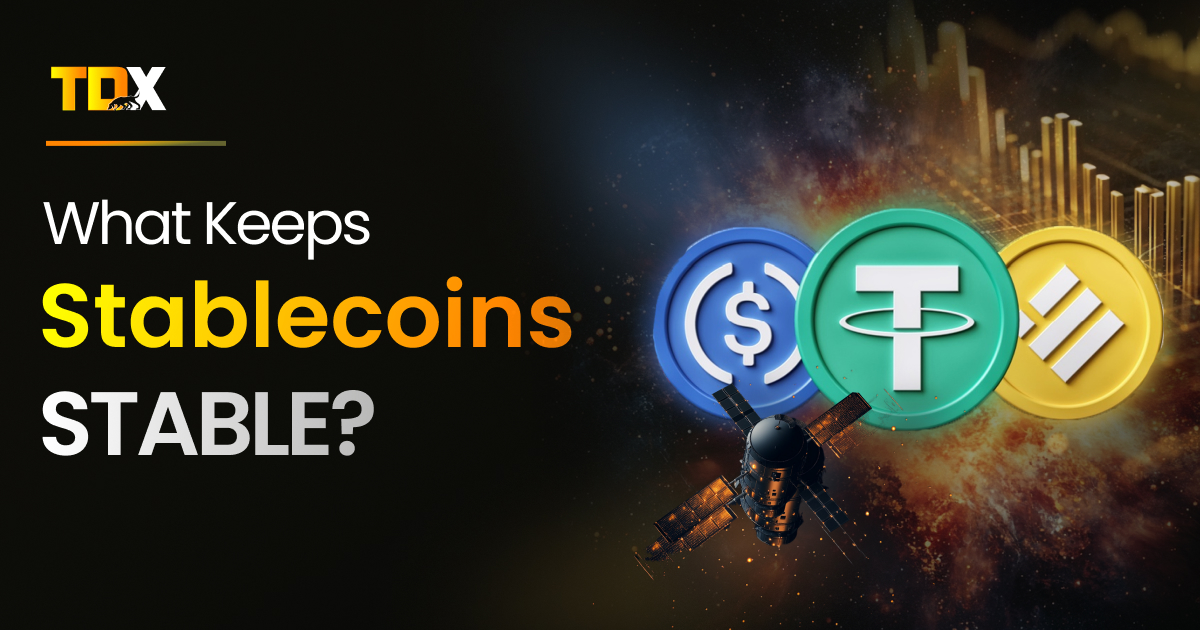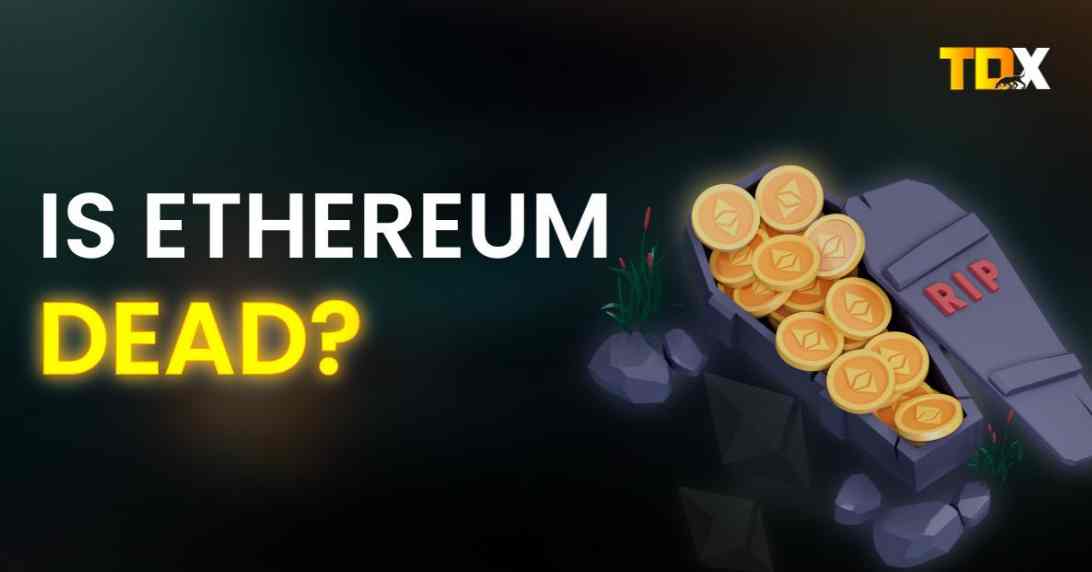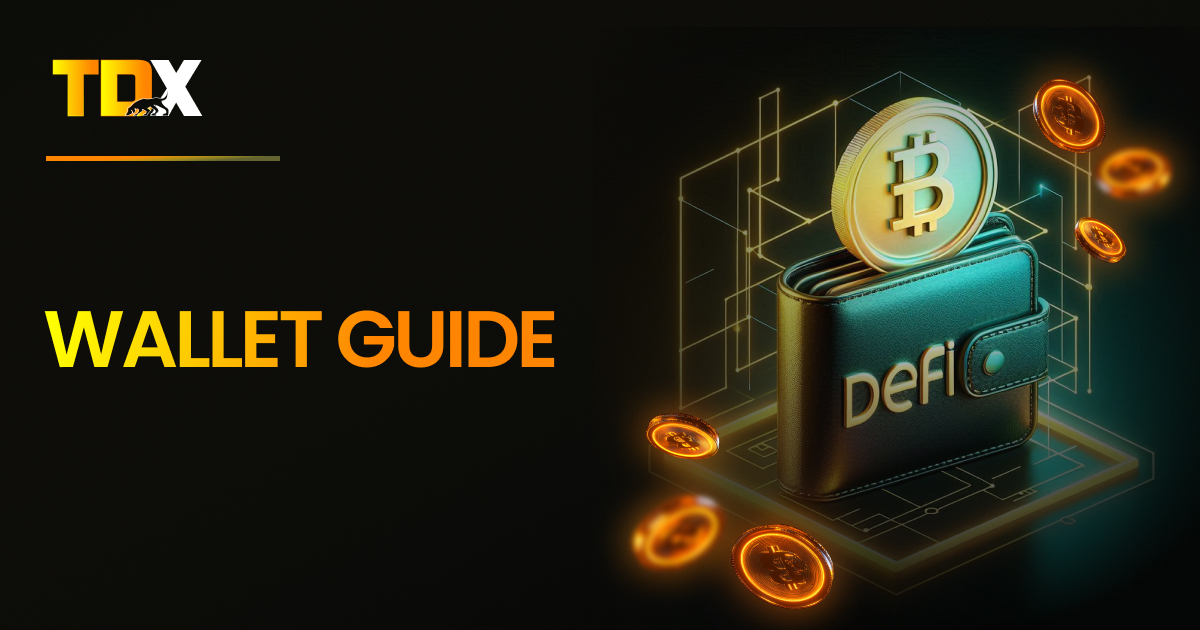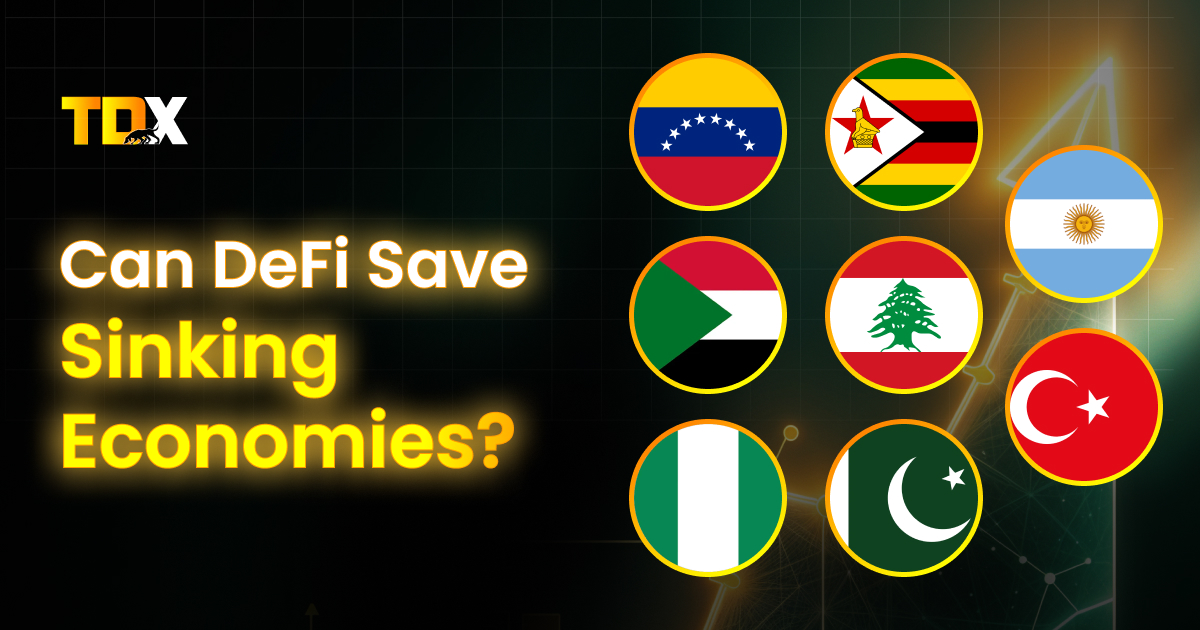 Back to blog
Back to blog


What Keeps Stablecoins Stable?
Cryptocurrencies, despite their revolutionary potential, deal with extreme price fluctuations. These fluctuations create a user experience challenge; which makes it difficult to price goods and services or even to simply hold value.
Imagine trying to buy a coffee with a currency that could lose half its value by the time you reach the cashier! Stablecoins deal with this issue by granting a digital asset that maintains a steady value, preserves portfolio value, and acts as digital cash.
Stabilization Mechanisms
The magic behind a stablecoin lies in its stabilization mechanism, the process by which it maintains its peg against a reference asset. These mechanisms vary greatly, influencing a stablecoin’s susceptibility to instability and potential “runs”.
Let’s have a look at the primary types of stabilization mechanisms discussed below.
I. Fiat Collateralized
Fiat-collateralized is the most common type of collateralized stablecoin, backed by reserves of fiat currency, typically the U.S. dollar. Ideally, for every stablecoin in circulation, there’s an equivalent amount of fiat currency held in reserve. The stability hinges on the issuer’s promise to redeem the stablecoin for its equivalent value in fiat currency.
How it works? Arbitrage plays a crucial role. If the stablecoin price rises above its peg (e.g., $1.01), traders buy USD and convert it to stablecoins with the issuer, then sell those stablecoins for USD on the secondary market, making a small profit and increasing the stablecoin supply, thus pushing the price back down.
And, if the price falls below the peg (e.g., $0.99), traders buy the discounted stablecoins and redeem them with the issuer for $1, decreasing the stablecoin supply and pushing the price back up. This mechanism relies on market participants’ belief in the stablecoin’s long-run peg.
The risk of “run” arises if the market loses faith in the ability of the user to maintain the peg. The lack of trust in the curator or a drop in the price of the ancillary assets could result in mass redemption, which may possibly lead to a collapse in value.
| Stablecoin | Description |
| USDT (Tether) | Pegged to USD and backed by cash reserves and liquid assets. |
| USDC (USD Coin) | Issued by Circle and Coinbase, fully backed by USD in regulated banks. |
| BUSD (Binance USD) | A 1:1 USD-backed stablecoin issued in partnership with Paxos. |
| TUSD (TrueUSD) | Fully collateralized by USD with real-time attestations for transparency. |
| GUSD (Gemini Dollar) | Backed by USD reserves held by Gemini, a regulated exchange. |
| PAX (Pax Dollar) | Issued by Paxos, backed 1:1 with USD in FDIC-insured banks. |
| EURS (STASIS Euro) | Pegged to the Euro and backed by equivalent fiat reserves. |
II. Crypto-Collateralized
These stablecoins are backed by other cryptocurrencies. To combat the underlying collateral’s volatility, the collateral must be a higher value than the minted stablecoin. For example, users might deposit $20 of crypto to mint $10 of stablecoins.
How it works? Like fiat-collateralized stablecoins, these rely on smart contracts to liquidate positions and maintain collateralization ratios if they fall below a certain threshold. However, the latent volatility of cryptocurrencies used as ancillary becomes a risk. These stablecoins can experience more frequent and pronounced runs.
| Stablecoin | Description |
| DAI | Pegged to USD and backed by overcollateralized crypto assets on MakerDAO. |
| sUSD | Collateralized by SNX tokens and used in the Synthetix ecosystem. |
| VAI | Minted on Binance Smart Chain, backed by crypto reserves. |
| LUSD | A decentralized stablecoin backed by ETH with 110% minimum collateral. |
| RAI | A non-pegged stablecoin backed by ETH, maintaining stability through incentives. |
| MIM | Collateralized by interest-bearing crypto assets via Abracadabra. |
| alUSD | Self-repaying stablecoin backed by yield-generating crypto deposit. |
III. Commodity-Collateralized
Commodity-collateralized stablecoins are digital assets backed by real-world commodities such as gold, silver, or oil. These are pegged to tangible assets, unlike fiat or crypto-backed stablecoins, and offer stability and intrinsic value.
Investors use them to hedge against inflation, diversify portfolios, and gain exposure to commodities without directly holding the physical assets. These stablecoins maintain their value by ensuring a reserve of the underlying commodity, which is either stored in vaults or managed by third-party custodians.
| Stablecoin | Description |
| PAXG (Paxos Gold) | Backed 1:1 by physical gold stored in London vaults. |
| XAUT (Tether Gold) | Pegged to gold, with each token representing one troy ounce of gold. |
| DGX (Digix Gold Token) | Each token represents 1 gram of gold, stored in secured vaults. |
| SILVER (Silver Standard) | A stablecoin backed by physical silver reserves. |
| CACHE Gold (CGT) | Each CGT token is fully redeemable for physical gold. |
| GCOIN (Gold Coin) | Pegged to gold and offers real-time verification of reserves. |
IV. Uncollateralized Stablecoins
Also known as algorithmic stablecoins, these stablecoins rely on complex algorithms to maintain their price stability, effectively balancing funds held on the blockchain via smart contracts with supply and demand. They function as real central banks, defending the peg of their currency in the market.
How it works? The algorithm buys assets if the price of the stablecoin goes above the peg; when the price drops below the peg, it sells assets. Another approach involves using a second “bond” token, where the supply of the bond token expands and contracts to stabilize the stablecoin.
However, due to the lack of over-collateralization; algorithmic stablecoins lose peg during black swan events or periods of unexpected volatility. Some algorithmic stablecoins rely on inflating and deflating the supply on-chain, but the system can collapse if the market loses faith.
TerraUSD (UST) is the classic example of an algorithmic stablecoin which was once heralded as an innovative algorithmic stablecoin. However, it experienced a catastrophic collapse in May 2022, serving as a lesson in the fragility of algorithmic mechanisms. A detailed case study is discussed in the subsequent section.
| Stablecoin | Description |
| FRAX | A partially algorithmic stablecoin that dynamically adjusts collateralization. |
| UST (TerraUSD) | Previously backed by LUNA in a decentralized algorithmic system (collapsed in 2022). |
| AMPL (Ampleforth) | Uses a rebasing mechanism to expand or contract supply based on demand. |
| USDD (Decentralized USD) | Algorithmic stablecoin on Tron, influenced by arbitrage mechanisms. |
| FEI | Maintains stability through direct incentives rather than collateral backing. |
| EURS (STASIS EURO) | A hybrid stablecoin that combines algorithmic and collateralized backing. |
When Stablecoin Was Not Stable: TerraUSD (UST)
UST was designed to maintain a stable value of $1 through a complex interplay with its sister token, LUNA, operating on the Terra blockchain. UST relied on algorithms to manage its supply and maintain its peg unlike traditional stablecoins backed by fiat currency reserves. This system, while innovative, proved to be its ultimate downfall.
The mint-and-burn protocol is the mechanism behind the stability of UST. When UST’s price exceeded $1, users could burn LUNA to mint new UST, which would increase UST’s supply and theoretically push its price back down. Vice versa, when UST fell below $1, users could burn UST to mint LUNA, decreasing UST’s supply and driving the price back up.
This arbitrage opportunity was intended to incentivize traders to maintain the peg. However, this system had critical design flaws. One of the most significant vulnerabilities was its dependency on market confidence.
The entire mechanism of stability relied on continued faith in both UST and LUNA. Once confidence fluctuated, the system entered a “death spiral”.
A stimulant for this loss of confidence occurred when a blockchain-based borrowing and lending protocol known as Anchor Protocol, announced a reduction in its deposit rates. Nearly 70% of UST’s circulating supply was deposited in Anchor, attracted by up to 20% unsustainable yields.
This high concentration created systemic risk; the rate reduction triggered uncertainty among investors, leading to withdrawals. The initial signs of trouble appeared on May 7, 2022, when large traders withdrew significant UST.
One converted 85 million UST, and another swapped 100 million UST for USDC. Terraform Labs responded by withdrawing 150 million UST from the 3pool, reducing liquidity. As approximately $3 billion worth of UST was withdrawn from Anchor, the price of UST started to drop, reaching $0.912.
The investors rushed to exit their positions as panic selling intensified. Attempts to stabilize the situation proved futile. Terraform Labs and supporters purchased approximately $480 million USDT for UST; however, this measure failed to restore the peg.
Centralized exchanges recorded significant UST inflows, with approximately 225 million UST being deposited. The algorithmic mechanism then began minting massive amounts of LUNA to try and stabilize UST, which led to the hyperinflation of LUNA.
LUNA’s supply increased from 342 million to 6.5 trillion tokens. As a result, LUNA’s value tumbled from $116 to near zero. This “death spiral” saw each attempt to stabilize UST further dilute LUNA’s value, creating a devastating feedback loop.
The total losses exceeded $42 billion for UST and LUNA investors, and the broader crypto market lost approximately $400 billion in value1. Other stablecoins, including Tether (USDT), experienced temporary de-pegging. By May 12, 2022 the Terra blockchain was halted.
| The UST crash highlighted the importance of robust backing mechanisms in maintaining stability. Unlike fiat-backed stablecoins that maintain reserves in traditional assets, UST’s value was primarily supported by the market’s faith in its algorithmic mechanism. When faced with significant market pressure, this ultimately proved insufficient. The failure of UST serves as an essential lesson for the cryptocurrency environment, underscoring the risks associated with algorithmic stablecoins and the requirement for transparent and sustainable financial systems. |
The Role of Arbitrage in Stablecoin Price Stability
Arbitrage is a fundamental mechanism that ensures stablecoins maintain their peg to their reference asset, whether it be commodities, fiat currency, or a decentralized algorithmic system. Across most stablecoin models, rational market behavior, driven by profit incentives, provides accurate price deviations and restores stability.
When a stablecoin falls below its intended peg, arbitrageurs step in to exploit the price difference. In fiat-collateralized stablecoins, traders can buy the discounted stablecoin, redeem it for its underlying reserve (such as USD), and profit from the price discrepancy.
This process reduces the circulating supply, increases demand, and naturally pushes the stablecoin back to its target price.
The mechanism is more complicated for algorithmic stablecoins but follows the same principles. If the stablecoin trades below the peg, the protocol may burn tokens or offer incentives to reduce supply, motivating market participants to help restore balance.
On the other hand, if a stablecoin trades above its peg, traders can mint new stablecoins at the fixed price, sell them on the open market at a premium, and increase supply, which pushes the price back down.
Algorithmic stablecoins often automate this process by expanding supply when demand surges, ensuring long-term price stability.
Arbitrage helps self-correct market imbalances, sustain confidence in the stablecoin’s value, and provide liquidity for efficient trading. Without it, stablecoins could experience extreme volatility, losing their reliability as a store of value and medium of exchange.
The Challenge of Maintaining Stability
Maintaining a stable peg is not without its challenges. A wide range of events can trigger a loss of confidence in a stablecoin’s ability to maintain its peg.
I. Collateral Devaluation
In fiat-backed stablecoins, if the issuer fails to maintain adequate reserves or lacks transparency, investors may question the stablecoin’s legitimacy, causing mass sell-offs and de-pegging events. Similarly, a drop in the price of the backing assets in crypto-collateralized stablecoins (e.g., ETH) can trigger liquidations, which creates a cascading effect that weakens confidence in the system.
II. Risks in Algorithmic Stablecoins
Maintaining stability is even more fragile for algorithmic stablecoins, which rely on automated mechanisms rather than collateral. A lack of market confidence can lead to a death spiral, where traders rush to exit, overwhelming the protocol’s ability to correct the price. The collapse of TerraUSD (UST) in 2022 was a prime example.
III. External Threats
External factors, such as regulatory crackdowns, security breaches, or issues with custodianship, can also trigger instability. If a government enforces strict controls on stablecoins or questions the legitimacy of an issuer’s reserves, it may lead to frozen assets, limited redemption options, or loss of investor trust.
IV. Bank-Run Event
Perhaps the most dangerous scenario is a bank-run-like event, where holders rush to redeem their stablecoins at once, draining reserves faster than they can be replenished. Without proper risk mitigation strategies such as over-collateralization, liquidity buffers, or emergency interventions, stablecoins can struggle to regain their peg, leading to a full-scale collapse.
The Bottom Line
Stablecoins play an important role in bridging the gap between decentralized assets and traditional finance, providing stability in an otherwise volatile crypto market. Various models such as fiat, crypto, commodity-backed, and algorithmic each have their own strengths and also come with inherent risks. Market confidence, collateral backing, and effective stabilization mechanisms are some of the keys to maintaining their peg.
40,000 readers 🚀 are getting insights with our media
 Read on Medium
Read on Medium 

Article
“Is Ethereum dead?” This is a trending argument that is appearing in various crypto communities and media. Which is not…


Guide
Welcome to the beginner’s guide on Trust Wallet, MetaMask, and Exodus—three most common cryptocurrency wallets for managing your crypto assets….


Article
When Venezuela’s inflation hit 189.8% in 2023 [Central Bank of Venezuela, 2023], Maria’s life savings of 200 million bolivars (enough…


Article
For generations, Indians have trusted one investment: fixed deposits (FDs). If you walk into any Indian household, chances are someone…


